Steel Billet Bar Q235 Q275 Q345 for Coke Oven Door
- Loading Port:
- Dalian
- Payment Terms:
- TT OR LC
- Min Order Qty:
- 100 m.t.
- Supply Capability:
- 50000 m.t./month
OKorder Service Pledge
OKorder Financial Service
You Might Also Like
Steel Billet Bar Q235 Q275 Q345 for Coke Oven Door
Description
Reference Price:$260/ton Mn 0.3%-0.6%
Rectangular billet continuous casting billet and mainly general carbon steel, low carbon low silicon cold-rolled material, high quality carbon structural steel, high strength low alloy steel, special steel, etc.
The billet is mainly divided into two kinds from the shape:
Slab: cross section width and height of the ratio of the larger, mainly used for rolling plate.
Billet: equal cross section width and height, or a huge difference, mainly used for rolling steel, wire rod. ,
Steel billets have distinct characteristics as compared with already furnished steel bars and products. Billets have a specific grain structure, which enables the metal to be processed more intricately. Steel billets are also known for their malleability and ductility, especially when exposed to varying temperatures during shaping and molding.
Processing of Steel Billet
Steel billets are considered fresh and raw, and they must undergo a series of manufacturing processes before they can be used for various purposes. Billets are made by means of freezing molten liquid, and are later exposed to extremely low temperatures in order to allow the metal to take shape and solidify in chemical structure. The temperature manipulates the metal's physical properties, and tones its strength and durability. The subsequent processes provide the metal's curved mold design so that it can fit the allotted space provided by other machines, which complete the finishing procedures.
Images
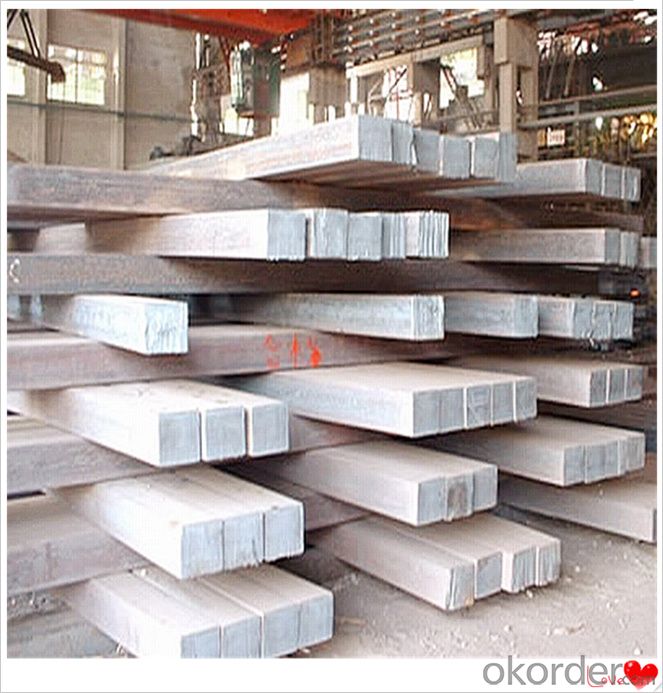
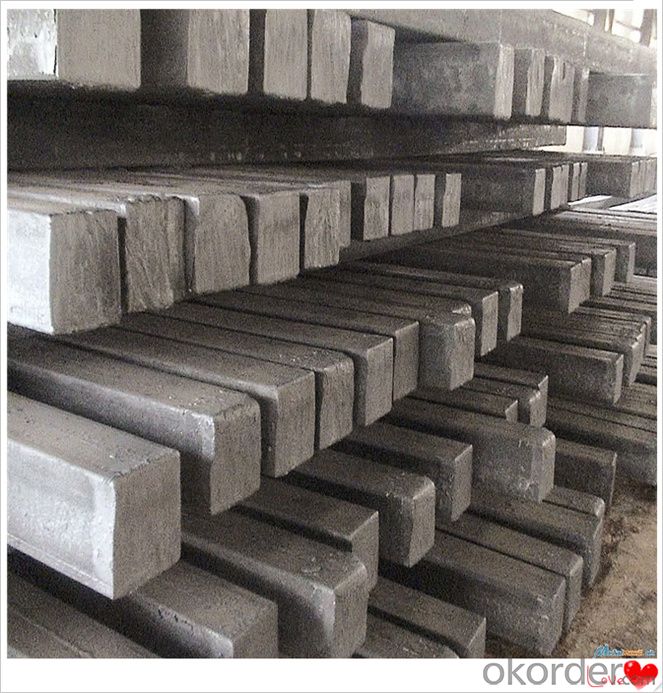
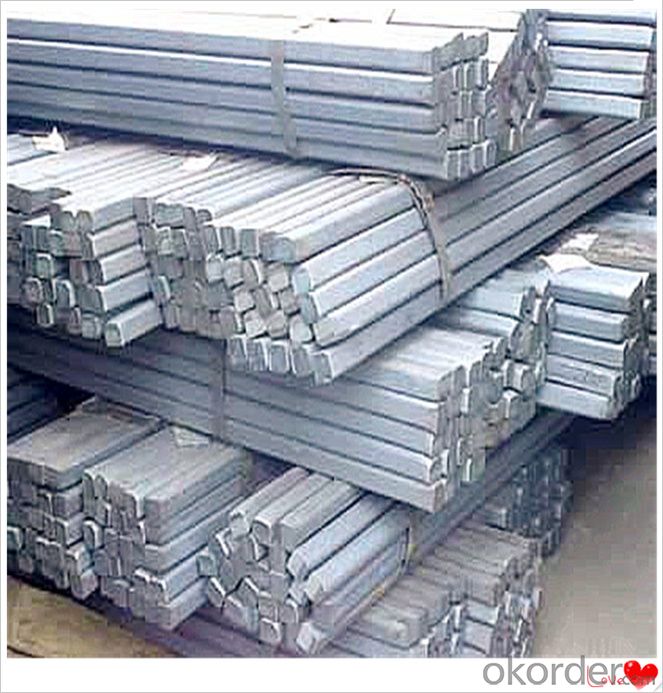
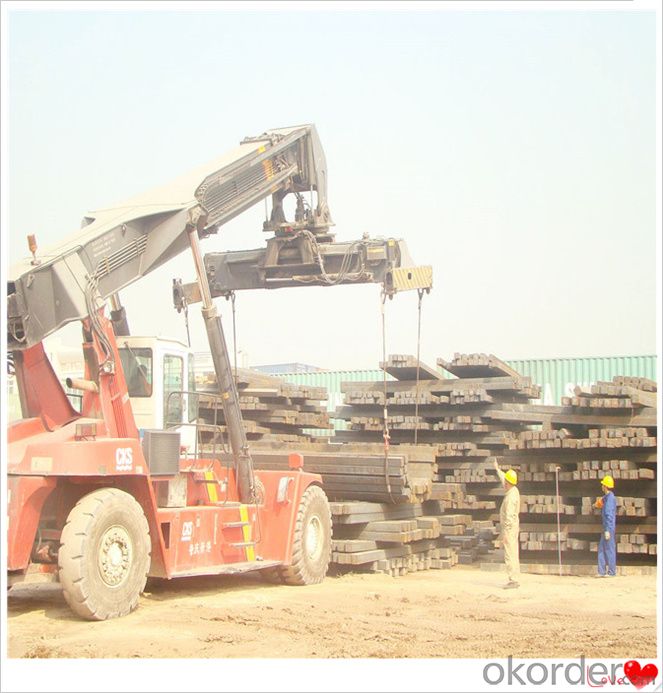
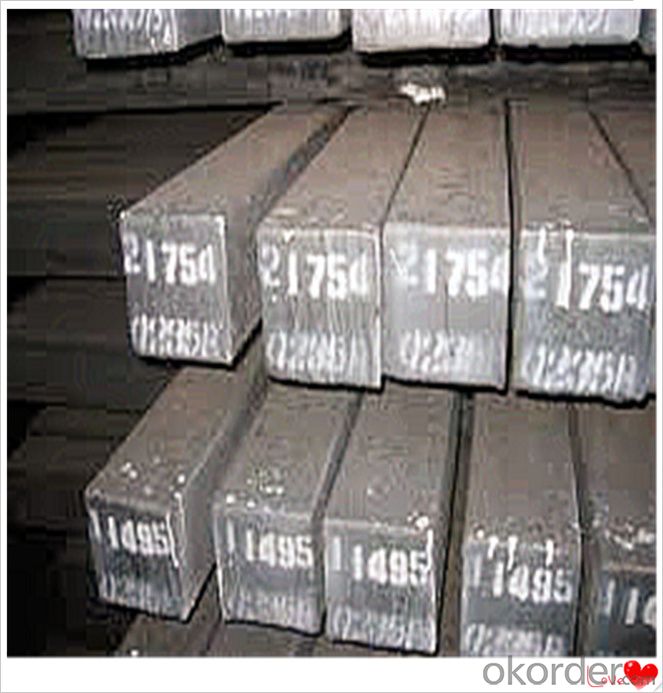
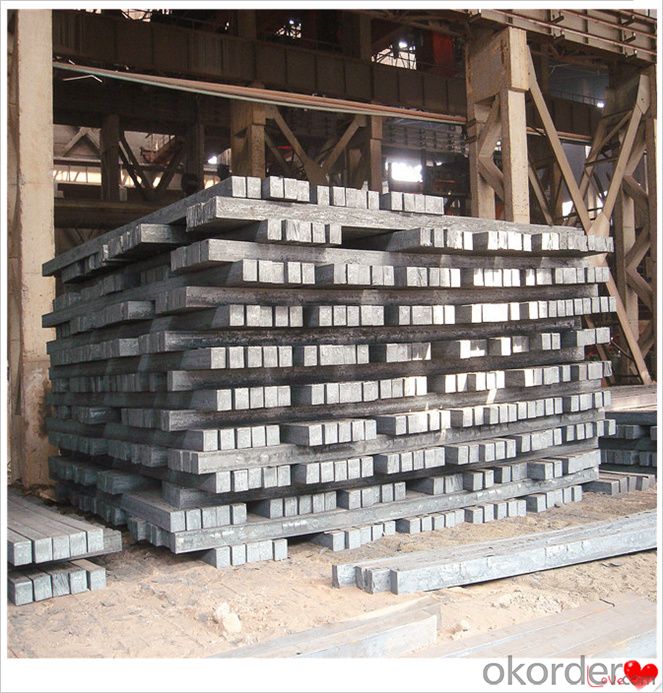
Technical Data
Size:100*100,120*120,150*150,130*130
Mn: 0.3%-0.6%
C: 1%
Cr:0.1%
Packaging
cargo ship or container
usually container price will add 15USD per ton
RFQ
We have organized several common questions for our clients,may help you sincerely:
1) How about your company?
A world class manufacturer & supplier of castings forging in carbon steel and alloy steel,is one of the large-scale professional investment casting production bases in China,consisting of both casting foundry forging and machining factory. Annually more than 8000 tons Precision casting and forging parts are exported to markets in Europe,America and Japan. OEM casting and forging service available according to customer’s requirements.
2) How to guarantee the quality of the products?
We have established the international advanced quality management system,every link from raw material to final product we have strict quality test;We resolutely put an end to unqualified products flowing into the market. At the same time, we will provide necessary follow-up service assurance.
3) How long can we receive the product after purchase?
In the purchase of product within three working days, We will arrange the factory delivery as soon as possible. The pecific time of receiving is related to the state and position of customers.Commonly 7 to 10 working days can be served.
4)Do you have your own QC department?
Yes, we have, our QC department will inspect the goods during the process of mass production and after completion of production.
hot sale!!! steel billets/ mild steel bar/ billet steel
(1): High quality steel with reasonable price.
(2): Wide excellent experiences with after-sale service.
(3): Every process will be checked by responsible QC which insures every product's quality.
(4): Professional packing teams which keep every packing safely.
(5): Trial order can be done in one week.
(6): Samples can be provided as your requirements.
If you are interested in our products, please don't hesitate to contact me.
Your any inquiry will be appreciated and we will offer you a rock-bottom price.
- Q:What are the different types of surface finishes available for steel billets?
- The different types of surface finishes available for steel billets include hot rolled, cold rolled, pickled and oiled, and galvanized finishes.
- Q:What are the different types of steel billet machining processes?
- There are several types of steel billet machining processes, including turning, milling, drilling, and grinding. Each of these processes involves different techniques and tools to shape and refine the steel billet into the desired form or component.
- Q:How are steel billets used in the production of railway components?
- Steel billets are an integral part of the production process for railway components. These billets, which are essentially semi-finished steel products, are used as the raw material for manufacturing various railway components such as rails, wheels, axles, and other structural parts. To produce railway components, the steel billets are first heated to a specific temperature to make them more malleable. This heating process is crucial as it allows the steel to be easily shaped and formed into the desired component. Once the billets have reached the required temperature, they are then transferred to the next stage of the production process. Here, they are subjected to various processes such as rolling, forging, and machining to transform them into the final shape and size required for the specific railway component. For instance, in the production of railway rails, the heated steel billets are passed through a series of rolling mills where they are gradually shaped and elongated into the desired rail profile. Similarly, for the production of wheels and axles, the billets are forged and machined to achieve the required dimensions and surface finish. The use of steel billets in the production of railway components ensures that the final products are strong, durable, and capable of withstanding the heavy loads and stresses associated with railway operations. The quality and characteristics of the steel billets play a vital role in determining the performance and longevity of the railway components. Overall, steel billets are crucial in the production of railway components as they provide the raw material that is shaped, formed, and processed to create the final products that are essential for the safe and efficient functioning of the railway system.
- Q:Are steel billets used in the manufacturing of industrial machinery?
- Yes, steel billets are commonly used in the manufacturing of industrial machinery. They serve as a primary raw material for various components and parts, providing strength, durability, and versatility required in heavy-duty applications.
- Q:What are the future trends in steel billet production?
- Some of the future trends in steel billet production include advancements in automation and robotics, increased use of renewable energy sources in the production process, implementation of more efficient and sustainable production techniques, and the development of new alloys and materials to enhance the performance and strength of steel billets. Additionally, there is a growing focus on reducing carbon emissions and improving the overall sustainability of steel production, leading to the exploration of greener technologies and practices in the industry.
- Q:What is the role of steel billets in the manufacturing of storage tanks?
- Steel billets play a crucial role in the manufacturing of storage tanks. These billets serve as the primary raw material for the construction of the tank's structural framework. They are essentially semi-finished steel products that are cast into a specific shape and size, typically in a rectangular or square form. The primary reason for using steel billets in the manufacturing of storage tanks is their exceptional strength and durability. Steel is renowned for its high tensile strength, which allows the tank to withstand the immense pressure and weight of the stored contents. Additionally, steel is resistant to corrosion, making it an ideal material for storage tanks that may hold various liquids or gases. Steel billets are also preferred for their malleability and versatility. They can be easily molded and welded into the desired shape, allowing for the customization of storage tanks to meet specific requirements. The flexibility of steel billets enables the construction of tanks of various sizes and capacities, accommodating different storage needs in industries such as oil and gas, chemical processing, water treatment, and many others. Furthermore, steel billets offer cost-effectiveness in the manufacturing process. The abundance of steel as a raw material and its recyclability contribute to lower production costs, making steel tanks a more economical choice compared to tanks made from other materials. Moreover, the longevity of steel tanks reduces maintenance and replacement costs over time, ensuring a higher return on investment for industries relying on storage tanks. In conclusion, steel billets play a vital role in the manufacturing of storage tanks due to their strength, durability, corrosion resistance, malleability, and cost-effectiveness. These billets form the core framework of the tanks, providing the necessary structural integrity to safely contain and store various liquids or gases. By utilizing steel billets, industries can rely on robust and reliable storage solutions that meet their specific storage requirements.
- Q:How are steel billets used in the manufacturing of construction machinery parts?
- Steel billets are crucial in the production of construction machinery parts. These semi-finished steel products serve as the raw material for shaping various machinery components. To initiate the manufacturing process, steel billets are heated to a high temperature in a furnace. This heating process enhances their malleability and facilitates further shaping. Once heated, the billets are passed through rollers and molds to achieve the desired shape and dimensions. Construction machinery parts such as gears, shafts, axles, and structural components require high strength and durability to withstand heavy-duty applications. Steel billets, made from high-quality steel alloys, possess these desirable properties, making them ideal for manufacturing such parts. After shaping, the billets undergo additional processes such as heat treatment and surface finishing. These treatments enhance their strength, hardness, and resistance to wear and corrosion. Consequently, the overall performance and longevity of the construction machinery parts are improved. The use of steel billets in the manufacturing of construction machinery parts offers several advantages. Firstly, steel is renowned for its excellent mechanical properties, including high tensile strength and toughness, which are vital for handling heavy loads and resisting impact and fatigue. Moreover, steel billets can be easily machined and welded, facilitating the precise manufacturing and assembly of complex machinery components. Additionally, steel is a versatile material that can be customized to meet specific requirements. By adjusting the composition and heat treatment processes, manufacturers can tailor the properties of the steel billets to suit the intended application of the construction machinery parts, ensuring optimum performance and durability. In conclusion, steel billets are indispensable in the production of construction machinery parts. Their high strength, durability, and versatility make them essential for manufacturing components that can withstand the demanding conditions of construction sites. By utilizing steel billets, manufacturers can create reliable and long-lasting machinery parts that contribute to the overall efficiency and safety of construction projects.
- Q:How are steel billets used in the manufacturing of tooling?
- Tooling manufacturing relies heavily on steel billets as a vital element. Tooling involves the creation and design of tools utilized across different industries for the purpose of cutting, shaping, or forming materials. Steel billets are semi-finished goods formed by casting molten steel and subsequently hot rolling them into diverse sizes and shapes. In tooling manufacturing, steel billets serve as the fundamental material from which tools are shaped. Typically, these billets are crafted from high-quality steel alloys known for their exceptional strength, durability, and resistance to wear. The presence of these traits is crucial in tooling applications as they guarantee the longevity and performance of the tools. Once steel billets are acquired, they undergo a series of processes to transform them into tooling components. The initial step entails heating the billets to a specific temperature, often exceeding the recrystallization temperature. This elevation in temperature renders the steel more malleable and easier to shape. This process is referred to as hot working. Subsequent to heating, the steel billets are shaped into the desired form using a variety of techniques including forging, extrusion, or rolling. These methods enable the steel to be molded into intricate shapes such as dies or molds, which are commonly employed in tooling applications. The shaping process ensures that the tooling components possess the requisite dimensions, surface finish, and structural integrity to effectively fulfill their intended purpose. Once the tooling components are shaped, they may undergo additional heat treatments to further enhance their mechanical properties. Processes such as tempering, annealing, or hardening are frequently employed to modify the steel's hardness, toughness, and resistance to wear. These treatments augment the lifespan of the tooling and enhance its performance in demanding manufacturing environments. In summary, steel billets play a vital role in tooling manufacturing by serving as the initial material for shaping tooling components. The utilization of high-quality steel in billets provides the necessary strength and durability required for tooling applications. Through the process of shaping, heat treating, and finishing these billets, manufacturers are able to create tooling that meets the specific requirements of diverse industries, enabling efficient and precise cutting, shaping, and forming of materials.
- Q:How are steel billets used in the manufacturing of slabs?
- Steel billets are an essential raw material used in the manufacturing of slabs. Slabs are large, flat pieces of steel that are used as a primary input in various industries, such as construction, automotive, and manufacturing. To produce slabs, the first step involves obtaining steel billets. These billets are semi-finished steel products that are typically obtained through the continuous casting process or by hot-rolling ingots. They are solid, rectangular or square-shaped blocks of steel with a cross-sectional area that can vary depending on the desired size and thickness of the slabs. Once the steel billets are obtained, they are heated to a high temperature to make them more malleable and easier to shape. This process, known as hot rolling, involves passing the billets through a series of rolling mills to progressively reduce their thickness and increase their length. The rolling mills apply intense pressure to the billets, causing them to elongate and acquire the desired dimensions. During the hot rolling process, the steel billets are often subjected to various manipulations, such as reheating and cooling, to ensure proper shaping and metallurgical properties. The billets may also go through additional processes, such as descaling (removing the oxide layer) and surface treatment, to enhance their quality and finish. Once the hot rolling process is completed, the steel billets are transformed into slabs. These slabs are then further processed to meet specific requirements. For instance, they may undergo additional rolling or reheating processes to achieve the desired thickness, dimensions, and surface finish. The slabs can also be cut into smaller pieces or further processed into different steel products, such as plates, sheets, or coils, depending on the intended use. In summary, steel billets play a crucial role in the manufacturing of slabs. They serve as the starting point for the production process, undergoing hot rolling and other treatments to transform them into the desired shape, size, and quality. The resulting slabs are then used as a primary input in various industries, contributing to the production of a wide range of steel products.
- Q:How are steel billets used in the production of construction equipment?
- Construction equipment production relies heavily on the use of steel billets. These semi-finished steel forms are essential in creating different components for construction equipment. The process of continuous casting is typically used to manufacture these billets, where molten steel is solidified in molds to form solid rectangular or square shapes. After obtaining steel billets, further processing is carried out to transform them into the desired construction equipment parts. This involves shaping, cutting, and machining the billets to create components like gears, shafts, axles, and structural frames. The versatility of steel allows these components to be customized to meet the specific requirements of different construction equipment. The utilization of steel billets in construction equipment production offers numerous advantages. Firstly, steel is known for its exceptional strength and durability, making it a perfect choice for heavy-duty applications. By incorporating steel billets, construction equipment manufacturers can ensure that their products can withstand the demanding conditions of construction sites and provide long-lasting performance. Additionally, steel billets can be easily welded, enabling the assembly of complex structures and components. This welding capability is crucial in construction equipment production, where multiple parts need to be securely joined together to create a robust and reliable machine. Furthermore, steel billets possess excellent machinability, allowing them to be easily shaped and formed into desired dimensions. This facilitates the precise manufacturing of intricate components, enhancing the overall performance and functionality of the construction equipment. Lastly, steel billets are readily available in a wide range of grades and compositions. This enables manufacturers to select the most suitable steel alloy for their specific construction equipment applications. This flexibility allows for the optimization of the equipment's performance, weight, and cost-effectiveness. In conclusion, steel billets play a crucial role in construction equipment production as they serve as the raw material for various components. Their strength, durability, weldability, machinability, and range of available alloys make them an ideal choice for manufacturing construction equipment that can withstand the demanding conditions of construction sites and deliver long-lasting performance.
1. Manufacturer Overview |
|
|---|---|
| Location | |
| Year Established | |
| Annual Output Value | |
| Main Markets | |
| Company Certifications | |
2. Manufacturer Certificates |
|
|---|---|
| a) Certification Name | |
| Range | |
| Reference | |
| Validity Period | |
3. Manufacturer Capability |
|
|---|---|
| a)Trade Capacity | |
| Nearest Port | |
| Export Percentage | |
| No.of Employees in Trade Department | |
| Language Spoken: | |
| b)Factory Information | |
| Factory Size: | |
| No. of Production Lines | |
| Contract Manufacturing | |
| Product Price Range | |
Send your message to us
Steel Billet Bar Q235 Q275 Q345 for Coke Oven Door
- Loading Port:
- Dalian
- Payment Terms:
- TT OR LC
- Min Order Qty:
- 100 m.t.
- Supply Capability:
- 50000 m.t./month
OKorder Service Pledge
OKorder Financial Service
Similar products
New products
Hot products
Hot Searches
Related keywords


































